- Need Technical Assistance? asahiws2023@getvfairs.io
The order is in program order. The program is subject to change

Associate Professor of Virology
Vice President, Global Pathogen Safety
Takeda Manufacturing Austria AG
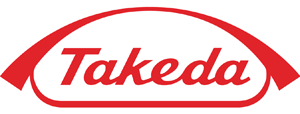
BIOGRAPHY
Beyond his work at Takeda, he is Chairman of the Plasma Protein Therapeutics Association&rsquo's (PPTA) Pathogen Safety Steering Committee, a Steering Committee member of the Consortium on Adventitious Agent Contamination in Biomanufacturing (CAACB) as coordinated by the Massachusetts Institute of Technology (MIT), and an Associate Professor at the Institute of Virology, Medical University of Vienna.
Dr. Kreil obtained a Ph.D. in Biochemistry from the University of Vienna, Austria, and spent several years on post-doctoral research at the same institution focusing on antiviral immunology and specifically, the role of antiviral antibodies. He then joined Takeda (Immuno/Baxter/Baxalta/Shire), working in the area of Pathogen Safety of biopharmaceuticals, as well as research on virus antibodies and vaccines. He is well-published and has been a frequent international lecturer on the safety of biological medicinal products versus viruses and prions as well as antiviral defense, with particular emphasis on the role of virus antibodies/IVIG and vaccines.
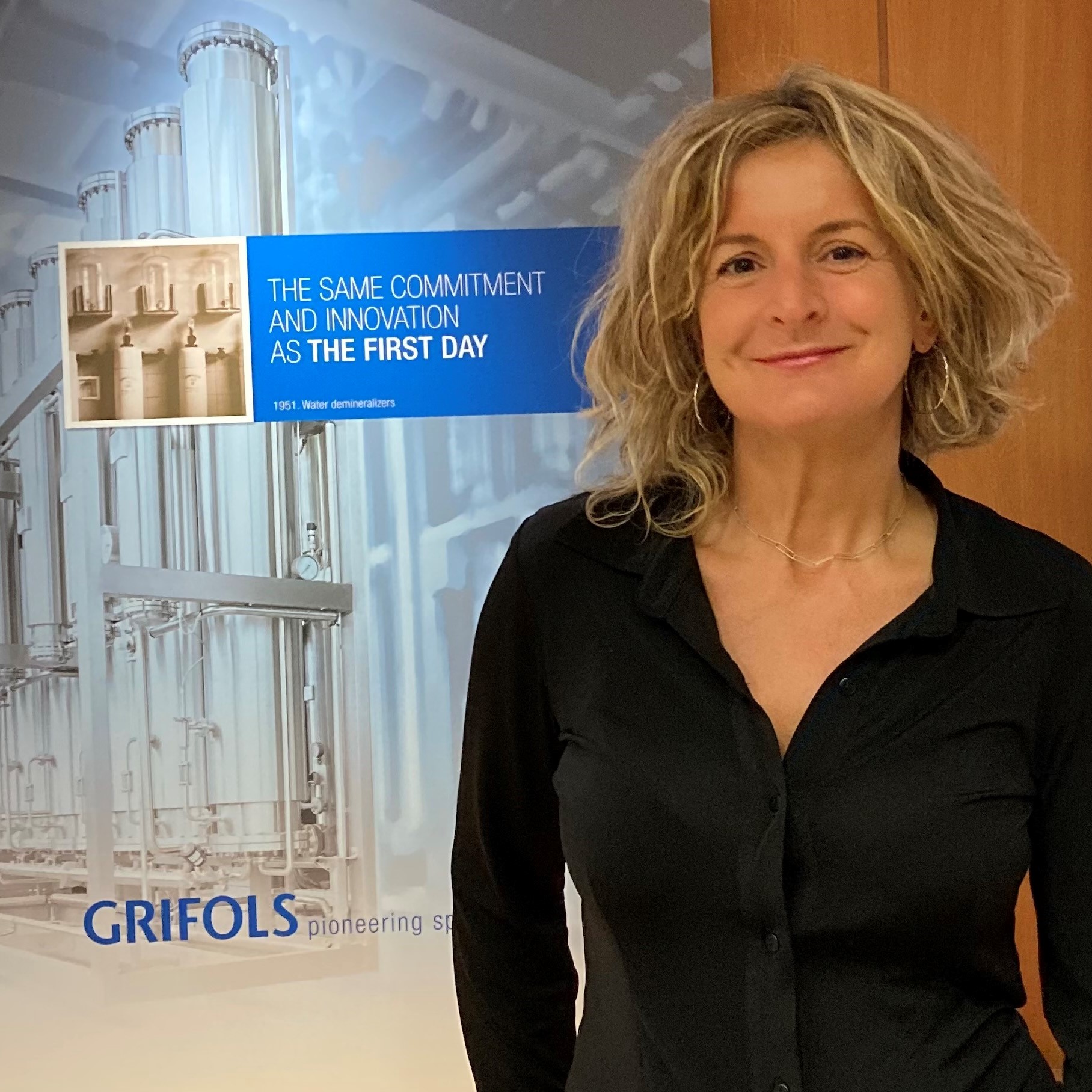
New Process Development Senior Manager, Scientific Innovation Office,
Plasma R&D
Grifols

BIOGRAPHY
Merche Faro joined Grifols starting as Quality Assurance Specialist focused on immunochemistry and then moved into the R&D area to continue her scientific activities.
In more than 15 years at R&D she has developed her knowledge of process development, bio analytics and product safety, mainly focused on plasma products development. Currently she is New Process Development Senior Manager in R&D Grifols, based in Barcelona, Spain. Merche Faro studied Chemistry at the University of Zaragoza. She started to work as a researcher in the Spanish Public Health Service where she obtained her Ph.D. in Science in 2002 (extraordinary prize degree) for her work in molecular biology, protein purification and proteomics (protein structure and function relationship). Part of this work was performed at the public laboratories of Minnesota and Arizona University in the US and Saarbrucken University in Germany. Dr. Faro is author of several scientific publications and patents.

Principal Scientist
Process and Product Development
Just-Evotec Biologics

BIOGRAPHY
Megan McClure is currently a Principal Scientist in the Process and Product Design department, leading the purification process design group at Just-Evotec Biologics Redmond. She has spent the entirety of her career working on downstream process development. Megan has been at Just for 8 years and prior to that she worked at Amgen for over 11 years. Megan obtained her Chemical Engineering degree from the University of Washington. She has worked with both chromatography and membrane technologies. The latter half of her career has really focused on viral clearance, particularly around nanofiltration and implications for end-to-end continuous processing.
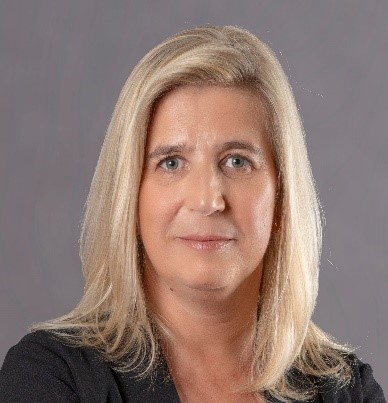
Head of DSP Development Lab, Coordinator of Bioproduction Unit
Animal Cell Technology Unit, Bioproduction Unit
iBET

BIOGRAPHY
Cristina Peixoto graduated in Applied Chemistry and she holds a Ph.D. in Engineering Sciences from Instituto de Tecnologia Quimica Biológica (ITQB) from New University of Lisbon. Working in Animal Cell Technology since 1996, her Ph.D. contributed to the establishment of several scalable purification processes for complex biopharmaceuticals, mainly virus, and virus-like particles for vaccine and gene therapy. Meanwhile, Cristina managed more than 30 research contract projects with Industrial partners, and some of the processes developed are nowadays in phase I and II. She has invited lecturers in several PhD and Master's Programs. She published over 70 manuscripts in refereed international journals

Head Global Pathogen Safety, R&D
CSL Behring
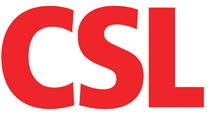
BIOGRAPHY
Dr. Eleonora Widmer is the Head of Global Pathogen Safety of CSL, with a scope of plasma-derived products, recombinants, gene therapy and vaccines.
She holds an MD from the University of Bern, Switzerland, and a Ph.D. in Molecular Microbiology from the University of Lausanne, Switzerland.
Prior experience includes clinical settings as well as at the Federal Office of Public Health of Switzerland. She has been working at CSL for over 15 years in the fields of Quality Control and Pathogen Safety.

Head of Virus Safety
Paul-Ehrlich-Institut

BIOGRAPHY
Dr. Johannes Blümel is leading the virus safety section at the Paul-Ehrlich-Institut, Langen. He is dealing with assessment of virus safety and TSE safety of blood products, recombinant DNA products such as monoclonal antibodies, and advanced therapy medicinal products (ATMPs) for clinical trials and marketing authorization. He participates as expert in EMA-Biologics Working Party (BWP) and EDQM TSE-certification procedure. Further, he is working in several research projects on virus inactivation and virus removal. Since 2023 he is chairing the group on blood-associated pathogens for the national advisory board “Arbeitskeis Blut” in Germany.
Prior to joining the Paul-Ehrlich-Institut in 1998, Dr. Blümel worked at the University Hospital, University of Bonn (1993-1998). He performed basic research on virus replication and received a five years training in medical virology and virus diagnostics. Dr. Blümel completed his Diploma Study in Biology (molecular genetics, microbiology, biophysics and physical chemistry) in 1991 at the University of Freiburg, Germany. He received his Ph.D. degree at the Department of Virology, University of Freiburg, Germany (1993). In 2010 he received teaching graduation (Habilitation) in Medical Virology from the University Frankfurt.
Updates on the revision of Guideline ICHQ5A
With the recently published draft revision of Guideline ICH Q5A, four main topics with a major impact on the viral safety strategy have been identified. The scope of Guideline ICH Q5A will be extended towards new product types such as certain viral vectors and testing for residual helper viruses used at vector production. In addition, the revision opens the possibility to use prior knowledge for validation of viral clearance. Last but not least, the revised draft guideline acknowledges the recent advances in using next generation sequencing for virus detection and the possibility of revising the adventitious agents testing strategy. The presentation will outline the changes made with the revision with their potential impact on viral safety evaluation of biotechnological products.
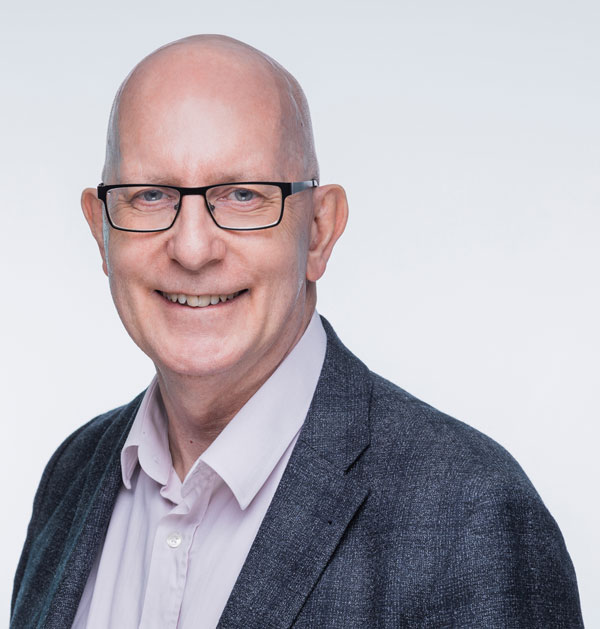
CEO / Operations Director
ViruSure GmbH

BIOGRAPHY
Andy Bailey is a protein chemist and experienced virologist and served for 9 years at the MRC Virology Unit in Glasgow. In 1995, he moved to the industry sector, initially as Director of Virus Validation services with Q-One Biotech Ltd, as manager at the Global Pathogen Safety group of Baxter Healthcare in Vienna, Austria and for the last 17 years as CEO of ViruSure, now a part of the Asahi Kasei Medical group. Over the last 27 years Andy has been actively involved in the virus and prion safety field, presenting at numerous regulatory agencies either in support of products or as an invited speaker at expert workshops
ICHQ5A R2: Practical aspects for meeting virus clearance requirements with virus filtration
The draft Revision 2 of the ICH QSA guideline on Viral Safety Evaluation of Biotechnology Products Derived from Cell Lines of Human or Animal Origin discusses in more depth the expectations for meeting virus safety requirements when working with virus removal filters. This presentation will look at some of the practical implications and challenges when endeavoring to meet these virus safety requirements, and using case studies will explore various aspects, including virus choice, worst-case conditions, prior knowledge and continuous manufacturing.

Associate Director & SME Viral Clearance, R&D
Charles River Laboratories Germany GmbH

BIOGRAPHY
Anja joined Charles River Laboratories (CRL), Germany in January 2015 as Study Director of viral clearance studies (VCS). Since January 2020 she is working as a VCS Specialist. As of May 2023, Anja also works as Associate Director R&D. Before joining CRL she worked as Research Director at Antitope Ltd., UK overseeing Ab humanization projects.
Anja obtained a M.Sc. in Biochemistry from the University of Witten (thesis performed at the University of Marburg). Then she worked in the field of innate immunity at the German Cancer Research Center (DKFZ), where she obtained a Ph.D. from the University of Heidelberg in 2008.
Worst case conditions for virus retentive filtration
Viral clearance studies (VCS) are one of the essential parts of a manufacturer’s program to ensure product safety since 1997.
Since the implementation of VCS it is appeared that the most robust step in removing viruses is the virus retentive filtration. For market authorization or biologic license application studies one should run the filtration at set-point conditions or under the worst case. Is this worst case always so well defined?
Looking at the data obtained in the recent years and performing experiments we want to shed a bit more light into what can be considered as worst case.
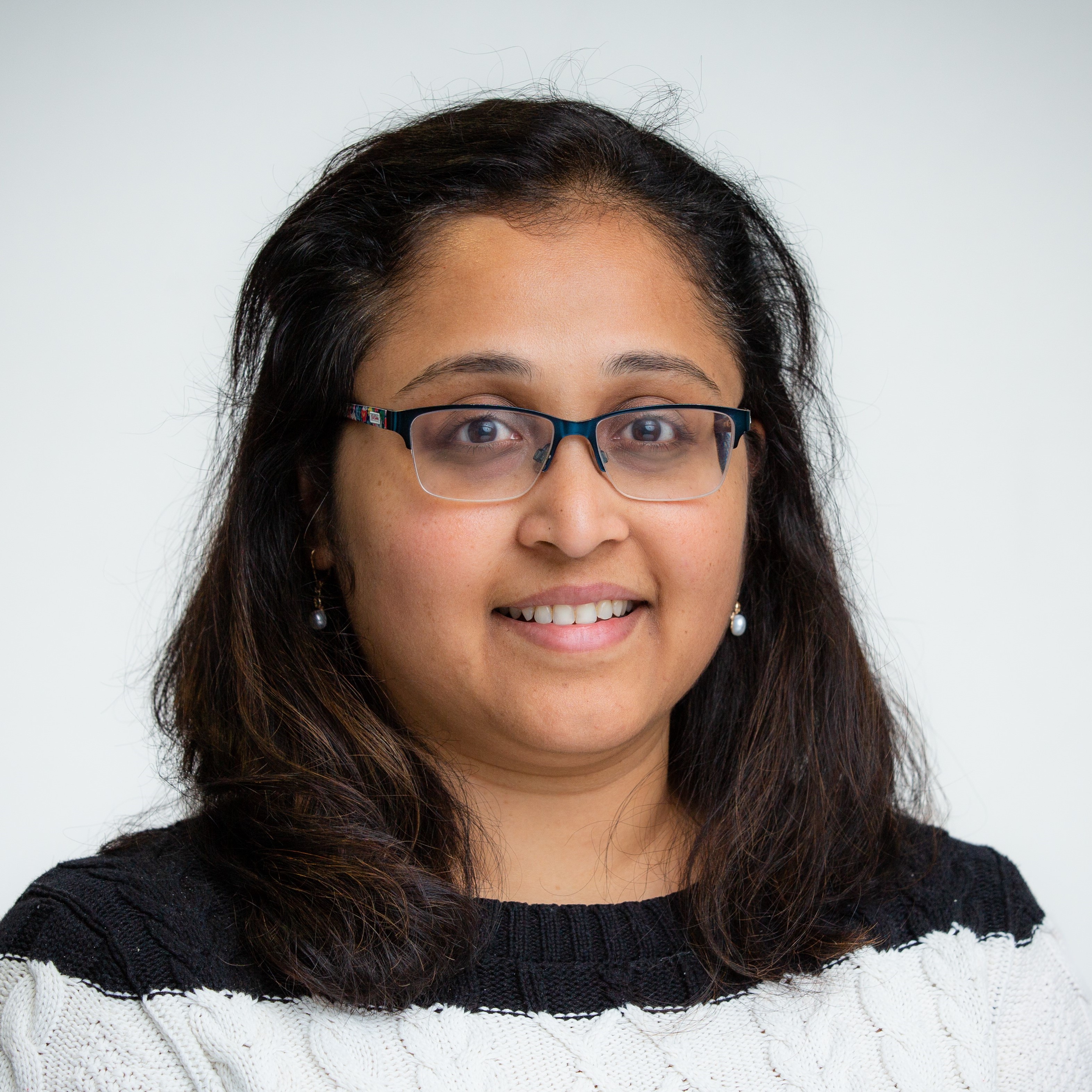
Senior Principal Scientist, Mab platform
Downstream Group
Fujifilm Diosynth Biotechnologies

BIOGRAPHY
Deepti Neelkantan is employed since 2017 as a Senior Principal Scientist with CDMO Fujifilm, UK Mab platform Downstream group based in Wilton, Redcar. She has worked on various early phase Mab customer projects up to 200L scale mainly implementing a platform approach, including performing process development for difficult Mabs or unit operations. Before this she spent 6 years as part of the Fujifilm, UK Billingham site Downstream PD team working both on microbial and mammalian projects from PD to GMP scale. Prior to this she has 5 years+ experience in downstream purification working in other life science companies in UK post her Master's in Biotechnology from Abertay Dundee University in Scotland.
Testing and optimization of various load conditions using the Planova BioEX to improve filterability and throughput of a client specific Mab that showed difficulties using our platform viral filtration approach
A client specific Phase I Mab using the Fujifilm platform downstream approach blocked the platform virus filter almost instantaneously, during an initial laboratory assessment run through. A very small throughput was observed of this difficult to virus filter client specific Mab on a Asahi Kasei Planova virus filters 20N and BioEX, an alternative filter to our platform approach. Although the aggregate profile by size exclusion chromatography of the unconditioned Mab was within expectations, sub visible particles were reported in the hands of the formulation group in Fujifilm, North Carolina. In collaboration with Fujifilm formulation group and Asahi’s data on BioEX improved filterability using additives, various load conditions, Mab concentration and different pre filters were tested in the Wilton labs, UK to improve throughput and filterability of this Mab through the Planova BioEX such that it is a scalable process for this Mab to GMP 2000L batch.
In this presentation, the various range of load conditions that were tested on the BioEX filter and different types of pre-filter used is discussed for this client specific difficult to filter molecule. A final chosen condition is tested at 10L scale for both fresh and freeze thawed virus filtration load material prior to scale up to pilot scale 200L. Various scales of the BioEX filter 3cm2, 100 cm2 and 1000 cm2 are used in this work and performance at different scales in a laboratory setting were within expectations.
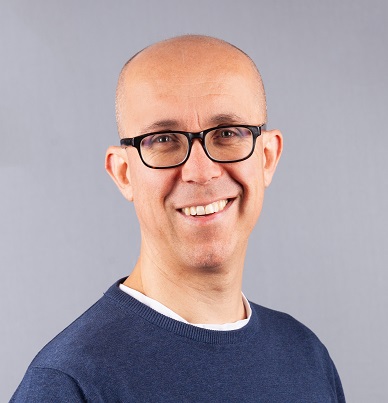
Principal Scientist, Downstream Processing
Byondis B.V.
BIOGRAPHY
Bas obtained in 1996 his master’s degree in chemistry with specializations in bio-organic and biochemistry. He obtained his Ph.D. in biochemistry from Nijmegen University in 2002. In 2001 he had already joined MSD, specializing in the field of small molecule and protein formulation and analysis. He switched to the department of downstream processing in 2006 working on the development of purification processes for proteins produced by prokaryotic and eukaryotic systems. Since February 2010, he is working at Byondis as a principal scientist in downstream processing. He is currently working on NBEs including monoclonal antibodies and first- and second-generation Antibody-Drug Conjugates, both in early-, middle- and late-stage process development, including process transfer, process qualification and process validation.
Comparison of Planova membranes with respect to process performance and virus removal
A study was performed comparing the Planova 15N, 20N, BioEX and S20N virus filters on filtration performance and viral clearance capability. Two monoclonal antibodies comprising different characteristics were used. The virus filters were tested in several positions in the downstream process, more specifically before and after the final ultra/diafiltration unit operation. Data demonstrate the capacity, especially of the Planova BioEX and S20N filters, to process high amounts of mAb in a short time, although the flux and flux decay vary and are mAb dependent. Viral clearance results show excellent virus removal.

Institute of Bioprocess Science & Engineering,
Department of Biotechnology
University of Natural Resources and Life Sciences Vienna (BOKU)
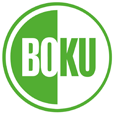
BIOGRAPHY
Professor Alois Jungbauer received his PhD in Food Technology and Biotechnology from BOKU. He is professor of Protein Technology, Downstream Processing and Bioprocess Engineering at the Institute of Bioprocess Science and Engineering at the University of Natural Resources. He also acted as deputy area head of Bioprocessing Engineering and Deputy Director of Research in the Austrian Centre of Industrial Biotechnology. He is currently working in the field of bioprocess engineering of proteins, viruses and gene therapy vectors. He has published 390 papers on recombinant protein production, bioseparation and advanced materials for bioprocess engineering, 17 patents and 12 book contributions and recently a monograph entitled “Protein Chromatography , Process Development and Scale Up”. He was co-founder of Biotechnology Journal. He acts also as the vice president of research of the European Society of Biochemical Engineering Science.
An end2end process for continuous biomanufacturing of antibodies using precipitation and membrane technology
The biopharmaceutical industry still operates in a batch process, mainly because it is a highly regulated industry, but there is increasing economic pressure on time-to-market and also on the environmental sustainability of biopharmaceutical production and facilities. New approaches to manufacturing using single-use technologies are increasingly being implemented, and production is shifting from dedicated production suites to large-scale facilities capable of manufacturing multiple products. Integrated, continuous biomanufacturing will accelerate and drive these developments by providing a way to reduce the footprint of a manufacturing facility and shorten the time required to produce clinical batches. A novel way to manufacture biopharmaceuticals through an integrated continuous biomanufacturing process that is not a mainstream technology is presented. The process consists of continuous fermentation using perfusion cell culture, precipitation, precipitate recovery by continuous membrane separation, flow-through chromatography, and continuous virus filtration. The advantage of this process is that it integrates the individual steps without a surge tank and therefore the residence time distribution is very narrow, resulting in fast start-up and shut-down times. The purification of recombinant antibodies is demonstrated, and the economic and environmental implications are discussed. This technology could significantly change the future of upstream and downstream processing of recombinant antibodies and other biopharmaceuticals by reducing the size of production facilities, improving process economics and environmental footprint, and eventually is the basis for autonomous bioprocessing.

Manager, Research & Development Division, Central Research Laboratory
Infectious Pathogen Research Section
Japan Blood Products Organization
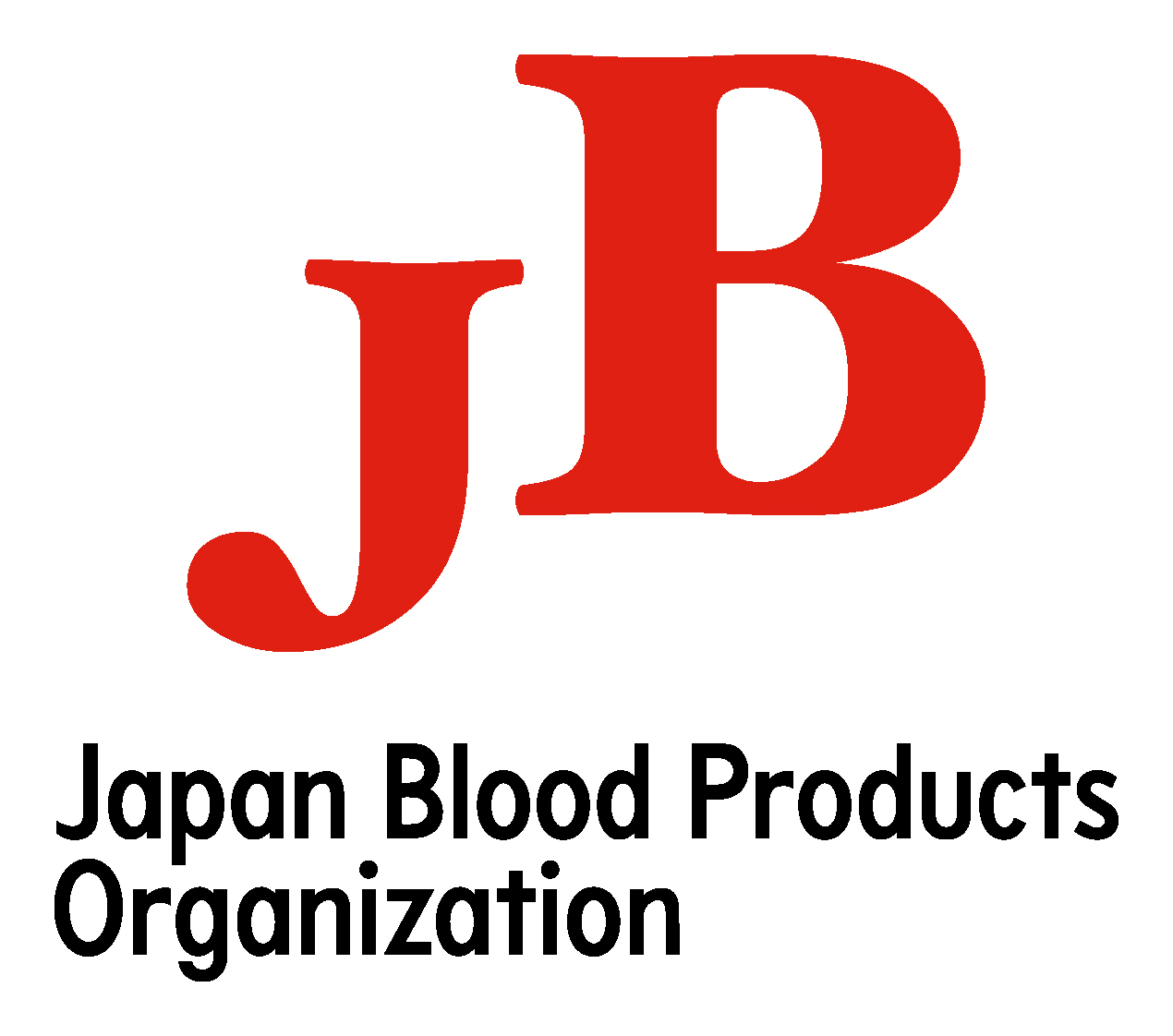
BIOGRAPHY
Takeru Urayama started his career at predecessor concern of Japan Blood Products Organization (JB) in 1993. Ever since, he has consistently been performing virus safety studies on plasma-derived products. He obtained a virology degree at Osaka University in 2011. During his research career, he has served as manager of the infectious pathogen research section of JB. To this day, he assumes nearly all roles in JB's virus safety research, and participates in public research that contributes to public health, such as research in the Health, Labor and Welfare Science Grants.
Evaluation of Planova™ S20N virus removal filter using plasma-derived products
A wide variety of virus removal filters are presently available on the market. It is well known that virus removal filters are one of the most effective devices to ensure the virus safety of plasma-derived products. This is attributable to the relatively clear mechanism of virus removal. Furthermore, the factors that could affect filtration is limited. However, users should understand the characteristics and limitations of each product and independently determine the optimal conditions.
PlanovaTM S20N (S20N) is a new virus removal filter that was released in 2021 from Asahi Kasei Medical. S20N has been announced to achieve high filtration performance and virus removal capacity. We evaluated the filtration performance and virus removal capacity using our plasma-derived products and Canine Parvovirus (CPV) as a key model virus. In this presentation, I show our data that compares S20N to other Asahi Kasei-produced filters.
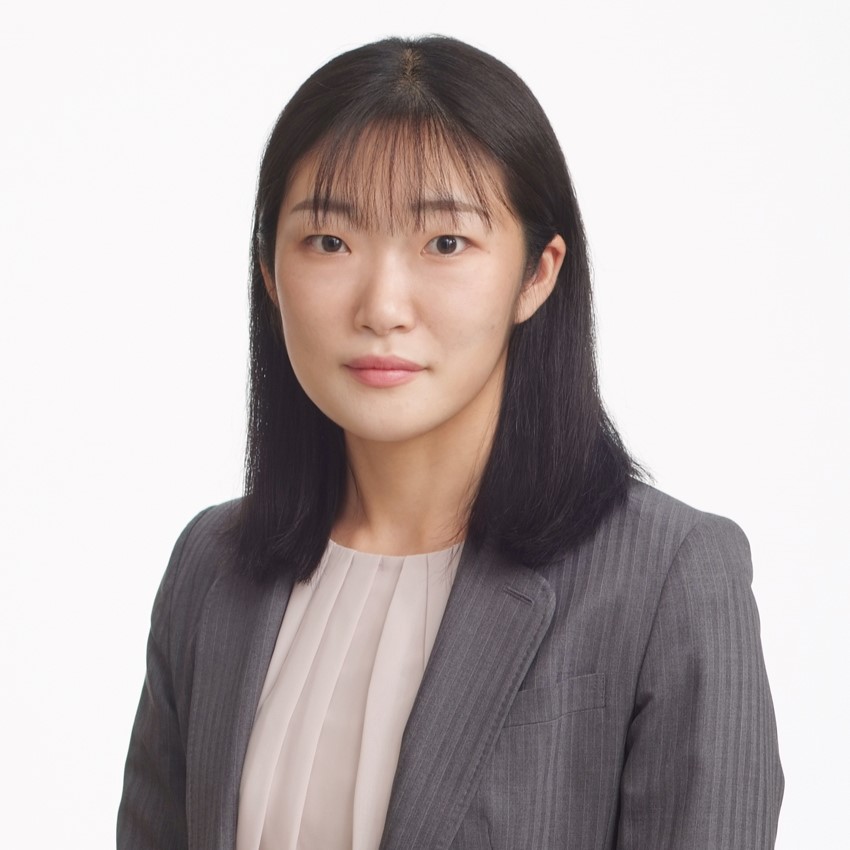
Researcher, Biologics Technology Research Laboratories I, Group III,
Biologics Division
Daiichi Sankyo Co., Ltd.

BIOGRAPHY
Yuka Ogino works in the Biologics Technology Research Laboratories at Daiichi Sankyo Co., Ltd. as a bioprocess researcher. She has +7 years of experience in downstream process science and development of biologics manufacturing, so she is familiar with chromatography, filtration and other related manufacturing and analytical technologies. Currently, she is working on process development and optimization for commercial process development including process characterization and validation for launched biologics as well as technology transfer to biologics manufacturing sites.
Process design to obtain robust filterability in virus filtration step for monoclonal antibody
Filterability is one of the key factors in establishing a robust and high-throughput manufacturing process for virus filtration of biopharmaceutical products including monoclonal antibody (mAb). To improve a virus filtration step, optimization of feed solution conditions and filter selection are essential.
Our study investigates the filterability of Planova™ 20N, BioEX, and S20N filters in mAb feed solutions with 15 different configurations of protein concentration, pH, and NaCl concentration selected by design of experiments (DOE). The DOE results in this presentation will provide valuable insights into the design space focusing on filterability for each Planova filter. These insights obtained from comparing the characteristics of each Planova filter would be beneficial for optimizing feed solution conditions, selecting the appropriate filter, and predicting filterability.
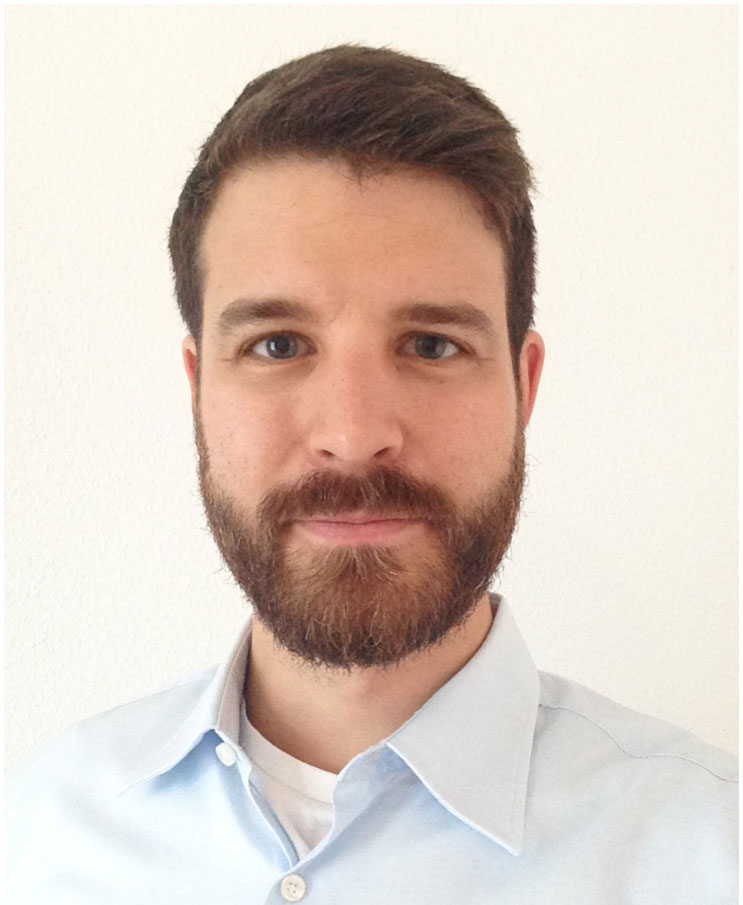
Senior Manager, Translational Research & Innovation
Global Pathogen Safety, R&D
CSL Behring

BIOGRAPHY
Remo Leisi leads the Translational Research and Innovation team within Global Pathogen Safety at CSL, which has a scope of plasma-derived products, recombinants, gene therapy and vaccines. He received his PhD in Molecular Virology at the University of Bern and further focused his studies on underlying molecular mechanisms in virus clearance steps as Postdoctoral Researcher in collaboration with CSL. His research contributions in the field of virus filtration aim to provide novel insights into structure-function relationship of membrane morphology and particle retention and thus to generate a better understanding of the filtration process.
Structural and functional insights into the next generation cellulose virus filter membrane with IgG feed stream
Removal of potential viral contaminants by nanofiltration is a commonly applied step during the manufacturing of biotherapeutics. Membrane fouling and flow decay pose a significant challenge for most types of filters and can lead to limited throughput, increased filtration time, and viral breakthrough. The Planova S20N is a recently developed cellulose-based virus filter membrane, which aims to overcome limitations of previous generations of filters. To obtain the first mechanistic insights into the Planova S20N membrane, the filter was challenged with fluorescently labeled virus-like particles of minute virus of mice (MVM), murine leukemia virus (MuLV), and human immunoglobulins (IgG), followed by visualization using laser-scanning microscopy. The retention profiles unveiled a size-specific retention of the particles at distinct filter depths, suggesting a highly selective separation of the particle species along a uniform pore size gradient. Fouling experiments were performed with increasing amounts of IgG molecules causing a concentration-dependent flow decay; however, without significant changes in the retention profile of the foulants. Importantly, MVM was effectively captured within the retentive zone during filtrations at constant convective flow and with multiple flow interruptions. Virus filtration studies performed with an IgG product intermediate underlined the improved membrane attributes in a relevant industrial setting, allowing for a higher throughput while assuring effective virus retention. Taken together, these first mechanistic insights into a next generation filter membrane provide a deeper understanding of the underlying structure-function relationship and the knowledge aids in the advancements in process performance.
Autors: Remo Leisi, Jan Bieri, Beryl Mazel-Sanchez, Tobias Schräder, Wolfram Schäfer, Ottmar Gnau, Andrew Laughhunn, Nathan J. Roth, Carlos Ros, Sue Amatayakul-Chantler, Eleonora Widmer

Senior Purification Specialist
Prothya Biosolutions B.V.

BIOGRAPHY
In 1989, Ingrid Prins started her career as a laboratory technician in Process and Product Development, being involved in the development of plasma derived medicinal products such as Prothrombin Complex Concentrate and IgG products.
Since 2007, as product development project leader and purification specialist, she is involved in the development and validation of virus removal/inactivation steps for plasma derived products and implementation of these steps in the manufacturing facility of Prothya (former Sanquin).
Planova S20N evaluation on PCC and IgG products
At Prothya Biosolutions B.V., the use of Planova 20N filters has reliably demonstrated a robust capacity for mitigating the risk of adventitious viruses in PCC and IgG products.
Prothya Biosolutions B.V. has undertaken a comparative study to investigate the feasibility of switching from the current Planova 20N filters (used in series) to the new Planova S20N filters (single filtration).
Protein filtration capacity studies for both products were performed. A comparison regarding the effective filter area to be used per manufacturing batch and other process parameters was made.
Additionally, virus validation studies were conducted at ViruSure in Vienna, Austria, to verify the virus removal capability of the Planova S20N filter. The findings of these comprehensive studies and evaluations are presented.
.jpg)
Principal Scientist / Cultivation Specialist
Biotech and Rare Diseases
API Manufacturing Development
Novo Nordisk A/S
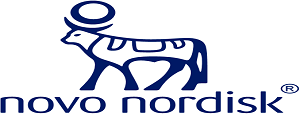
BIOGRAPHY
Manuel Quirós initiated his career in the Biotech and Rare Disease area of Novo Nordisk back in 2018 as a Principal Scientist and Cultivation Specialist. He is responsible for different process optimization programs and for technology scouting for upstream processes in the Biotech and Rare Disease area.
Manuel has earlier worked as Senior Upstream Scientist is a Basel based Biotech company and has additionally more than 6 years of experience working as Postdoctoral researcher in the field of winemaking and 6 more years in Academia.
Manuel completed his PhD in Molecular Microbiology from the Complutense University of Madrid back in 2005.
Contribution of alternative cell retention filter to the overall output in perfusion processes
During the development of a second-generation perfusion process of a currently marketed API, the selection of a more adequate cell retention device allowing for an increased product transmission was underlined among the possible contributing factors to improve.
Screening of commercially available alternatives allowed for the identification of a specific filter that showed 100% transmission of the product through the membrane throughout the whole cultivation process. However, although a 40% increase in product yield was obtained at manufacturing scale for the current process, some wrong assumptions made during the scale-up of the process hampered the implementation of the alternative filter, since several product CQAs were impacted.
These learnings were taken into consideration during process development and could finally be solved by the introduction of additional changes both upstream and downstream, allowing for a final overall 6X increase in process yield of the second-generation of a currently marketed API.

Senior Director
Enabling Technologies, Process Research and Development, PhD
Merck Sharp & Dohme
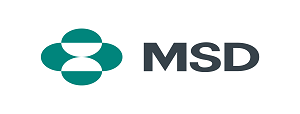
BIOGRAPHY
Mark Brower is currently leading the Continuous and Expression Technologies group within Enabling Technologies, Process Research and Development Department at Merck & Co., Inc. There, he is responsible for leading a team of cross-functional scientists investigating novel applications of continuous manufacturing across therapeutic modalities from vaccines and biologics to small-molecule flow chemistry, and in addition, the development of novel cell lines for biomolecule production. Mark’s group leverages cross-functional expertise to enhance therapeutic production platforms for low-cost, highly robust, and highly productive processes both by exploiting alternate expression hosts and by developing next generation operations including perfusion cell culture, continuous downstream biomanufacturing, electro- and photochemical synthesis. Prior to this, Mark has developed purification processes for both natural product secondary metabolites and small molecule enzymatic biotransformations. Mark earned his BS in Chemical Engineering from The Pennsylvania State University, and a PhD in the same field from Cambridge University
Enabling Commercial Continuous Manufacturing of Biologics through Upstream Innovation and Facility Design
Continuous Manufacturing (CM) of therapeutic proteins has progressed from proof of concept, through technology maturation over the course of the past decade and is currently in the adoption phase of its lifecycle. Not only have process development and process characterization workflows been established, but also manufacturing networks have been stood-up to support molecules moving through company pipelines using the CM paradigm. As a result, commercial production of therapeutic proteins with continuous manufacturing is within reach by the biotechnology community. At MSD, a therapeutic protein platform has been deployed from production in a perfusion bioreactor through bulk purification, fine purification, and virus filtration resulting in ultrafiltration product with the intent to deploy for use commercial manufacturing.
To establish commercial readiness and support its pipeline of therapeutic proteins, MSD has invested in establishing the CM platform in our existing clinical production facility. Upon establishment of the CM platform, a multi-batch cGMP campaign was completed to prepare relevant clinical supplies. Leveraging this accomplishment, MSD has also broken ground on a new next-generation manufacturing facility focusing on continuous manufacturing process technologies and incorporating intelligent facility design concepts to enable maximum flexibility allowing for continued diversity in the research pipeline.
This presentation will focus on scalability of the MSD CM platform from the lab-scale for process development, through pilot scale for toxicology supply, to cGMP production at intermediate scale for clinical supply. In addition, pain points and success stories from scaling the CM process to clinical production will be highlighted along with PAT integrations focusing on the perfusion bioreactor and its cell retention device. Finally, aspects of the next generation facility design will be discussed including the use of podular manufacturing spaces for flexibility and future capability expansion and automation design to enable rapid and seamless process transfers from lab to clinical to commercial nodes. With adherence to these principles, we intend to ease the transition to GMP continuous manufacturing processes while building a next-generation manufacturing network to meet commercial demands.

Associate Professor of Virology
Vice President, Global Pathogen Safety
Takeda Manufacturing Austria AG

BIOGRAPHY
Beyond his work at Takeda, he is Chairman of the Plasma Protein Therapeutics Association&rsquo's (PPTA) Pathogen Safety Steering Committee, a Steering Committee member of the Consortium on Adventitious Agent Contamination in Biomanufacturing (CAACB) as coordinated by the Massachusetts Institute of Technology (MIT), and an Associate Professor at the Institute of Virology, Medical University of Vienna.
Dr. Kreil obtained a Ph.D. in Biochemistry from the University of Vienna, Austria, and spent several years on post-doctoral research at the same institution focusing on antiviral immunology and specifically, the role of antiviral antibodies. He then joined Takeda (Immuno/Baxter/Baxalta/Shire), working in the area of Pathogen Safety of biopharmaceuticals, as well as research on virus antibodies and vaccines. He is well-published and has been a frequent international lecturer on the safety of biological medicinal products versus viruses and prions as well as antiviral defense, with particular emphasis on the role of virus antibodies/IVIG and vaccines.
Virus Safety Concepts for New Medical Biotechnology Modalities
.jpg)
Senior Director
Manufacturing and Tech Ops (Genomic Medicine)
Alexion, AstraZeneca Rare Disease
.png)
BIOGRAPHY
Mike is currently leading the Manufacturing & Tech Ops activities for the Genomic Medicine unit of Alexion (formerly LogicBio Therapeutics). His department is responsible for the process and analytical development of AAV-based therapeutics, as well as tech transfer and implementation at CMOs. Prior to Alexion, Mike held positions of increasing responsibility within Process Development, MSAT, External Manufacturing, and CMC Portfolio management. He holds an M.S. and B.S. of Chemical Engineering from Tufts University.
Viral Clearance Strategies and Considerations for AAV-based Gene Therapy Products
Gene therapy delivery using adeno-associated virus (AAV) continues to make strides clinically and has the opportunity to impact patients suffering from devastating genetic diseases.
As the quantity of INDs and approvals continue growing, AAV-based viral safety considerations have become a topic of interest. Production occurs in multiple cell culture systems (human / non-human, virus-assisted / transient transfection). The type and risk of viral contamination can be specific to each platform and limits the ability to implement a universal approach. Additionally, viral clearance validation presents a unique challenge as the product is itself a virus.
The work presented will highlight the approach Alexion took to build viral safety into their AAV manufacturing platform and will discuss a case study where viral safety was improved through changes in both the upstream and downstream manufacturing process. Research viral clearance studies for multiple AAV products established the capability of the purification process to remove adventitious viruses.

Associate Principal Scientist, PhD
Enabling Technology - Continuous Manufacturing Large Molecules
Merck Sharp & Dohme
BIOGRAPHY
Lara graduated with an industrial PhD in Biochemical Engineering from University College London (UK), in collaboration with Merck in 2018. She focused on ultra scale-down technologies for ultrafiltration/diafiltration operations for high concentrated mAbs. She has been working at Merck for ~5 years post-graduation across departments and sites including process development, GMP manufacturing and most recently enabling technology groups in both US and Switzerland sites. Lara’s areas of expertise include continuous downstream operations and antibody drug conjugates, in particular continuous filtration steps and their implementation to GMP environments.
Optimizing Advanced Process Control Strategies and Viral Filtration Operations for Continuous Manufacturing for Biologics Processes
Switching from standard fed-batch (FB) processes to intensified continuous manufacturing (CM) can significantly improve the efficiency and cost-effectiveness of monoclonal antibody biologics production. CM processes offer higher volumetric productivity, with 2 to 5-fold higher cell density and shorter cultivation duration.
One key difference between CM and traditional FB processes is the importance of advanced process control. CM processes are designed to operate continuously, with uninterrupted medium exchange and perfusate flow supply from upstream to downstream. This is made possible through interconnectivity and unit linkages, where downstream flowrates are determined by the perfusate titer using process calculation tools. Instead of relying on large hold intermediate tanks, CM processes utilize smaller surge vessel tanks between unit operations to manage process pauses and maintain flow continuity. This approach reduces the overall footprint of the manufacturing process.
The ability to withstand process pauses becomes crucial in ensuring viral clearance in CM. Specifically, it is important to evaluate whether commercial viral filters can handle anticipated low flux conditions and potential pressure interruptions. A case study was conducted using minute virus of mice (MVM)-spiked feeds and small-scale hollow fiber virus filters with hydrophilic modified polyvinylidene fluoride (PVDF) membrane. Low flux, high volumetric throughput, filter fouling and process interruptions had minimal impact on overall MVM log-reduction virus (LRV) achieving >4 log reduction when running continuously up to 6 days. This work was completed for Planova BioEX and plans are underway for Planova S20N by 2024.
Small-scale data can inform decisions on filter selection and establish criteria for filter switching in continuous manufacturing. These case studies demonstrate the feasibility of using commercially available virus filters in GMP processes and highlight the potential for overcoming unique challenges through tailored process design, ultimately increasing operational flexibility and advancing on process control.
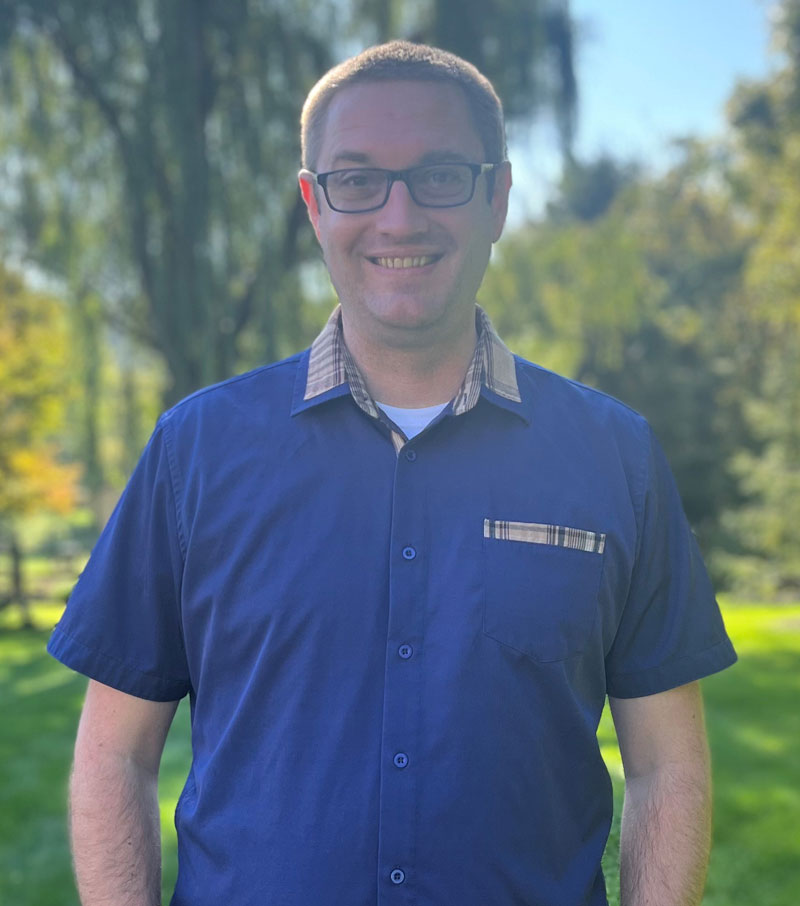
MSAT Manager
Lonza Biologics, Portsmouth NH
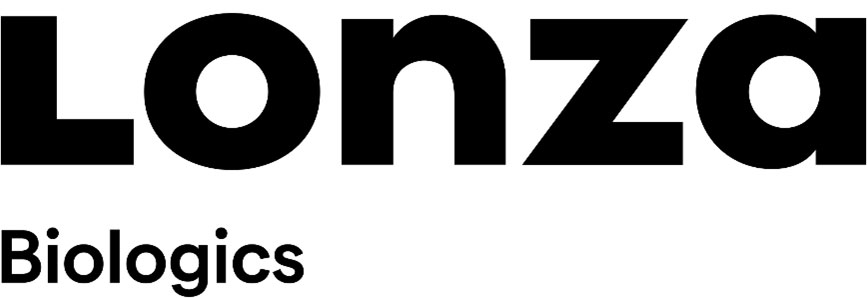
BIOGRAPHY
Matt Macknight has been with Lonza Biologics in Portsmouth, NH since 2005. He has held a variety of roles within Manufacturing, and Leadership positions across Manufacturing and MSAT. In his tenure at Lonza he has had involvement in start-up of 3 different manufacturing suites. Most recently, he was a lead on development and application of the Asahi MOTIV system in a new multi-product 6 kL Manufacturing suite.
MOTIV Application at Lonza Biologics (Portsmouth, NH)
Management of buffers in biologic purification has been steady state for decades, without much in the way of innovation. Use of systems capable of point of use formulation and dilution using highly concentrated stock solutions present an opportunity to reduce equipment, footprint, and resources as manufacturing processes scale up.
At Lonza we have applied the MOTIV system in a way that has seen significant reductions in plastic waste, equipment usage, facility footprint, and human resource required to supply buffer needs in a new state of the art multi-product facility. Collaboration between Lonza and Asahi is ongoing with a focus on continuous improvement with the system.
In this presentation, Lonza Portsmouth’s overall experience with MOTIV will be discussed including benefits, considerations, challenges, and ongoing collaboration.
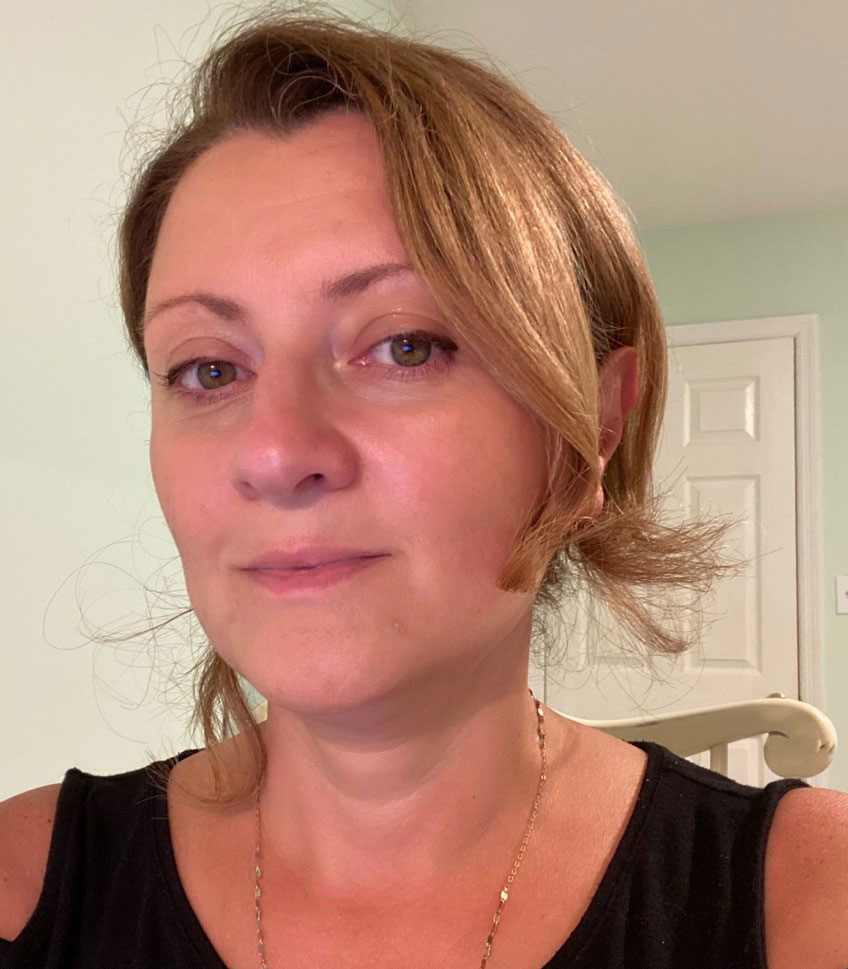
Senior Principal Scientist
EBPD/VRD
Pfizer
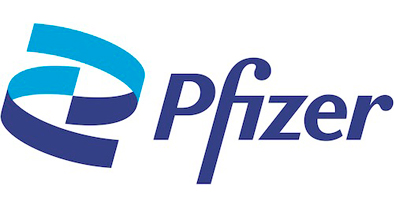
BIOGRAPHY
Natalia Ugulava, Ph.D. is a Protein Purification group leader in Early Bioprocess Development (EBPD) for Vaccine Research and Development (VRD) at Pfizer. Dr. Ugulava is a scientific professional with an extensive experience in bioprocesses development and evaluation, production, and validation of new therapeutic targets, an excellent track record of breakthrough scientific discoveries and technology innovations. Author of many internationally influencing journal publications, Natalia has joined Pfizer in July 2022 to bring her expertise in bioprocess design, commercialization, biomolecule science advancement, process development, and life cycle management of the product portfolio to apply in early bioprocess development for vaccines. With the previous experience in scientific conduct of the Pathogen Safety programs, Natalia is responsible for development of biologically safe processes for protein subunit vaccines, and technology transfer to manufacturing productions. In addition, Natalia is involved in purification of proteins for early pre-clinical studies and candidates’ selection for future vaccine development.
Addition of nanofiltration step at early bioprocess development stage
The viral safety of products intended for clinical trials is a priority. Because adventitious viruses present in original materials can contaminate biologics during processing, manufacturers must follow regulatory requirements to ensure adequate virus removal. Viral clearance data must be generated to support the safety of products for clinical trials. Earlier the viral clearance steps are introduced into the process, easier is for building the overall biologically safe process for future commercial product.
The nanofiltration is an effective and robust viral removal step based on the size-exclusion mechanism. Nanofiltration is known to effectively remove wide range of viruses (envelope/non-envelope, large and small in size, DNA and RNA types). In this presentation, the goal was to select the right filter product for target molecule based on filter performance with the aim to evaluate the viral clearance capacity of the selected filter in consequent studies. The throughput, filterability (yield), process time (Flux), and matrix compatibility (buffer/product) at different load concentrations were investigated for six (6) different filters from four (4) different vendors. Based on the results, amongst six (6) tested filters, Planova S20N has been identified as the best performer, thus it was selected for viral clearance evaluation.

Product Manager
Product Management & Business Development
Asahi Kasei Bioprocess EU
BIOGRAPHY
Achraf Jazi has worked for the Japanese company Asahi Kasei Bioprocess for 2 and a half years. He is a recognized specialist in virus removal filtration and tangential flow microfiltration. Within Asahi Kasei Bioprocess, Achraf is Product Manager in charge of the technical support and business development in Europe. Prior to joining Asahi Kasei Bioprocess, he worked 4 years for Pall Corporation as R&D Specialist in hollow fiber membrane development. Achraf obtained his Master of Science in Molecular and Applied Biotechnology in 2017 from RWTH Aachen University in Germany.
Viral Clearance Study Optimization for Planova Virus Removal Filters and Technical Support By Asahi Kasei
Viral clearance studies are critical to establishing virus filtration unit operations in the manufacturing of plasma-derived and biopharmaceutical products. Asahi Kasei Bioprocess supports customer viral clearance studies through reviews of protocols, virus filtration operation design prior to the study and providing technical support to end users.

Product Manager
Product Management & Business Development
Asahi Kasei Bioprocess Europe
BIOGRAPHY
Haiko Fischer has been a part of Asahi Kasei Bioprocess Europe from 2017. He started in R&D team for 3 years and holds the position of Product Manager since 2020 for Germany, Austria, Switzerland and Eastern Europe, where he is responsible for technical support and business development. Haiko holds a degree in Chemical and Process Engineering from the University Maua Institute of Technology.
End-to-end continuous process for mAb purification implementing total flow-through integrated polishing process
There are few reported examples of continuous processes, particularly fully end-to-end continuous processes adopted in the actual bioproduction, because of difficulties such as feed adjustment, production batch definition, and incorporating the continuous virus filtration process. For these difficulties, we propose an end-to-end continuous process by performing low-pH inactivation in a pool with automatic pH control and incorporating total flow-through integrated polishing process directly connecting two columns and a virus filter.
It was confirmed that high HCP reduction, mAb recovery and quite stable virus filtration were realized with feed adjustment and clear definition of production batch. The inline spike viral clearance tests were practiced with two different types of virus for virus filters implemented in the integrated process and confirmed robust virus reduction at the constant flow rate loading even after 60 min process pause.
The end-to-end continuous process proposed in this study is highly effective for practical mAb production processes and investigated virus filters have excellent applicability to the continuous processes operated at constant flux.
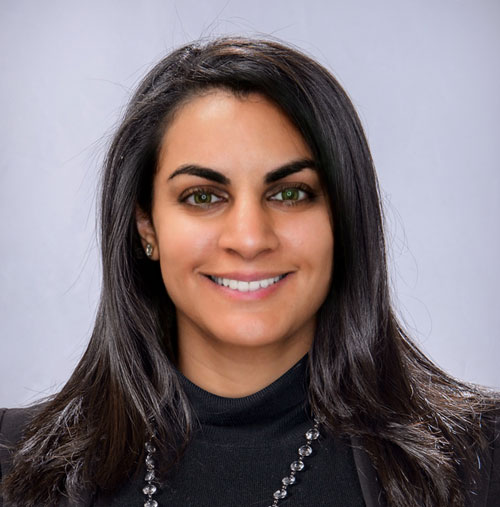
Senior Account Manager
Account Management/ Bioprocess- Planova
Asahi Kasei Bioprocess America
BIOGRAPHY
Sarah El Mossalamy received her Bachelor of Sciences from the University of California, Davis and Master of Public Health, Global Health, and Infectious Disease from Touro University. She has been working in the biotechnology industry since 2013 and joined Asahi Kasei Bioprocess America in 2018. She currently supports the Planova division of the organizations covering a territory known as the Northeast Annex which extends from the eastern side of Canada, covering parts of the Northeast, MidAtlantic and Puerto Rico in the United States. She enjoys what she does, and I has had the pleasure of working on several critical biological programs that have resulted in commercial products that improve the quality of life for people all over the world. She continues to support the development of new biological programs with her accounts in the United States.
MASSACHUSETTS TRAINING CENTER— A TRUSTED PARTNER FOR PLANOVA™ FILTRATION PRODUCTS, TECHNOLOGIES, AND MORE
The Asahi Kasei Bioprocess America training and information center was established in 2019 and is located in Chelmsford, Massachusetts. The Center offers both virtual and in-person customizable learning programs on Planova™ filtration products, as well as other biotechnology technologies and services. In addition to training and courses the laboratory offers molecule evaluation services for both our virus and microfilters.

Manager
Global Marketing, Scientific Affairs, Bioprocess Division
Asahi Kasei Medical
BIOGRAPHY
Yugo Uchida started his career with the Asahi Kasei Group in 2010 after graduating from Kyoto Pharmaceutical University with a Master’s degree in Pharmacy. He spent 12 years in clinical development at Asahi Kasei Pharma and moved to the Bioprocess Division in 2022. His primary role is to develop a global marketing strategy to promote Planova products to plasma customers worldwide. According to global strategy, he has been engaging in creating promotional tools, accelerating joint research collaborating with R&D team or customers to disseminate evidence to support Planova strength.
Proof of Concept Performance with Planova S20N Novel Virus Removal Filter, “Processing more, Faster”.
Planova is the world’s first virus removal filter launched in 1989. Planova has emerged as a technical breakthrough in the biopharmaceutical industry to assure robust viral safety. To further meet a market needs, novel Planova filter— Planova S20N using regenerated cellulose with improved pressure resistance were first launched in 2021. Due to improved pressure resistance, Planova S20N can operate with high transmembrane pressure leading to higher throughput while maintaining traditional Planova capabilities of robust virus removal capability and stable protein filterability over a wide range of solution conditions. After two years of small scale Planova S20N release, several in-house and customer experiments revealed and characterized its performance with their process in a variety of evaluation conditions. Here, I would like to share with you one of preliminary result which shows “proof of concept” gained from these evaluations.

Product Manager
Product Management & Business Development
Asahi Kasei Bioprocess Europe
BIOGRAPHY
Pinar is the Product Manager in charge of technical support and business development in Europe with more than 6 years of experience in the field. She is a specialist in virus removal filtration. She obtained a bachelor’s degree in Biomedical Laboratory Technology at the University of Applied Sciences KhLim, in Belgium.
Virus Safety against Emerging Viruses: History and Advances of Challenges in Viral Filtration Technology
Emerging viruses, as exemplified by COVID-19, are a global concern and a challenge that must be addressed on an ongoing basis. Since the 1980s, we have been facing emerging viruses such as HIV and HCV with membrane-based virus filtration technologies, developing optimal membranes and providing them to the market.
In addition, we have been collaborating with Paul Ehrlich Institute , pharmaceutical companies, and other external organizations on various emerging viruses such as Zika, HEV, and Corona virus, which have been reported since the 2010s, and have accumulated knowledge on their characterization and filtration removal to contribute to ensuring the safety of biological products.
The history and advances of our studies on improving safety against emerging viruses using filtration technology are discussed.

Senior Product Manager & BioOptimal TFF Specialist
Product Management & Business Development
Asahi Kasei Bioprocess Europe
BIOGRAPHY
Konstantin has worked for the Japanese company Asahi Kasei Bioprocess for over 9 years. In Asahi Kasei Bioprocess, Konstantin is Senior Product Manager and BioOptimal TFF Specialist in charge of technical support and business development in Europe. Prior to joining Asahi Kasei Bioprocess, Konstantin worked for over six years in research at the Université catholique de Louvain, Belgium. His research work involved Hox genes and their function and relation in the Central Nervous System, including Medulloblastoma. He has collaborated on several publications and holds a Degree in Biomedical Science.
Bioprocess Products For Protein Purification: BioOptimal MF-SL; UMP/UJP
The main features of BioOptimal™ MF-SL and Microza®UMP/UJP are their capacity for complete clearance of cells and cell debris, their excellent product transmission/sieving, their high resistance to clogging offering long runs before filter changeouts, their flexibility to be used in Tangential Flow Filtration (TFF) or in Alternating Tangential Flow (ATF). They can be run in batch, fed batch or perfusion mode at high cell densities and be implemented in a wide range of applications ranging from classical mAb production to Cell and Gene Therapy”.
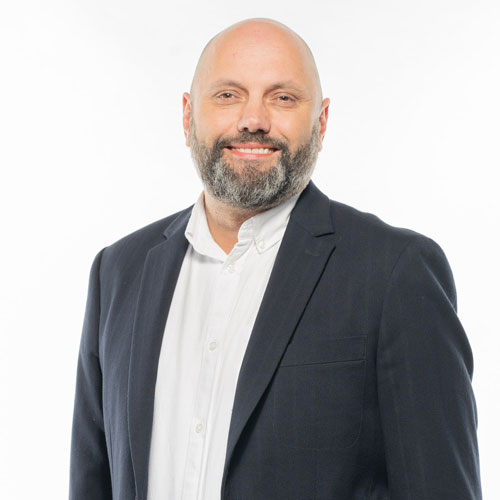
Laboratory Technician
Research & Development
Asahi Kasei Bioprocess Europe
BIOGRAPHY
Daniel is part of the R&D team at Asahi Kasei Bioprocess Europe since 2021 and holds the position of Laboratory Technician. He is responsible for equipment maintenance, trainings seminars at cologne technical center and non-GLP studies with Planova filters. Before joining Asahi Kasei, Daniel worked for many years in the pharmaceutical industry, where he was responsible for the commissioning and qualification of water treatment systems. He has a strong background in automation in the GMP environment.
Cologne Technical Center-Your Training Center for Planova™ and BioOptimal™ Filtration Technology
Asahi Kasei Bioprocess Europe - Cologne Technical Center: Opened in 2011 in Cologne, Germany, the Cologne Technical Center of Asahi Kasei Bioprocess Europe provides extended services and customized training seminars to customers in Europe as well as around the world.
The facility has 336 m² of laboratory space and offers a wide range of training seminars such us PlanovaTM Virus filtration (large scale and small scale); Automated Virus Filtration demonstration; BioOptimalTM Microfiltration among others. Language will not be a barrier as they are offering the courses in English, German, French, and Dutch.
Apart from training seminar, they do also offer in Cologne: Optimization studies with your protein and Non-GLP studies (feasibility studies) to support customers to improve their processes and performs analyses using the newest available technology and software to optimize filtration conditions.

Senior Consultant (Scientific Affairs)
Bioprocess division
Asahi Kasei Medical
BIOGRAPHY
Dr. Hironobu Shirataki joined Asahi Kasei after earning a degree in physics, He engaged in research on polymer science and later obtained a Ph.D. (Science) for research on the thermodynamics of polymer solutions. After that, he engaged in research and development of electronic materials, inorganic materials, porous membranes, etc. After developing and commercializing a hollow fiber membrane adsorber for protein purification, he transferred to Planova Division (now Bioprocess Division) of Asahi Kasei Medical, where he is engaged in technology development and marketing of the membrane adsorber, chromatography resins and a microfilter. He retired as Manager, Scientific Affairs in September 2020 and returned to continue to work within Bioprocess as a consultant.
Numerical calculations of membrane structure, virus removal performance, and filtration behavior of virus filters based on a heterogeneous membrane structural model comprising multiple layers with different pore size distributions
Virus filters are essential in bioprocessing for safe protein production. These filters are designed to reject virus particles but allow the protein product to be recovered in the permeate. Understanding the correlation between virus filter structure and performance is important for efficient process design. Here, an advanced multilayer structure model is applied to virus filtration experimental data in order to analyse virus reduction. By applying a multilayer structural model comprised of theoretical layers having pore size distributions to published visualization data, we demonstrate in the present study that virus removal performance and filtration behaviour can be quantitatively calculated. Virus filter structure can be classified into asymmetric high porosity, symmetric high density and laminated structure types, and all types exhibit sufficient virus removal properties when used in normal processes. Laminated structure filter shows extremely high virus particle removal performance, achieving the most robust virus removal even in filtration with process pauses, although flux decay tends to occur during filtration of solutions containing even very small amounts of aggregate. Conversely, asymmetric high porosity filter may show the lower virus removal in processes involving multiple pauses that exceed practical conditions but shows stable filtration behaviour with lower increase in pressure increase and lower flux decay even for the filtration of solutions containing aggregates. Such filtration behaviour and virus removal properties can be quantitatively expressed and predicted by numerical calculations in models based on the theoretical multilayer structure.calculated curve showed good coincidence with experimental curve.

Senior Account Manager
Fluid Management
Asahi Kasei Bioprocess Deutschland GmbH
BIOGRAPHY
Originally starting out as a Biochemical Engineer, Márton Nagy rounded out his studies with a masters in Pharmaceutical Bioengineering from the University of Munich.
His career started as an R&D Engineering Specialist at INCYTON, a startup from Munich specialized in real-time cell analysis. Moving on internally he was made responsible to establish and run the sales department at the company.
Márton was contacted by Asahi Kasei Bioprocess in 2022 and successfully recruited as Senior Account Manager with responsibilities in North- and Central Europe including Ireland, UK, NL and BE. He started his position in June 2023.
MOTIV™ 3 Straight-Forward Buffer Formulation
Our 3-pump inline buffer formulation systems provide dilute and conditioned buffers constructed from up to three streams. One larger pump is used to deliver the diluent, typically WFI or purified water, into the system.
And two smaller pumps can deliver buffer concentrate and an acid or base modifier, respectively.
The built-in automation software – OCELOT™ System Control – can near-effortlessly regulate the blend to exact specifications using conductivity and pH feedback control, or alternatively mass flow control